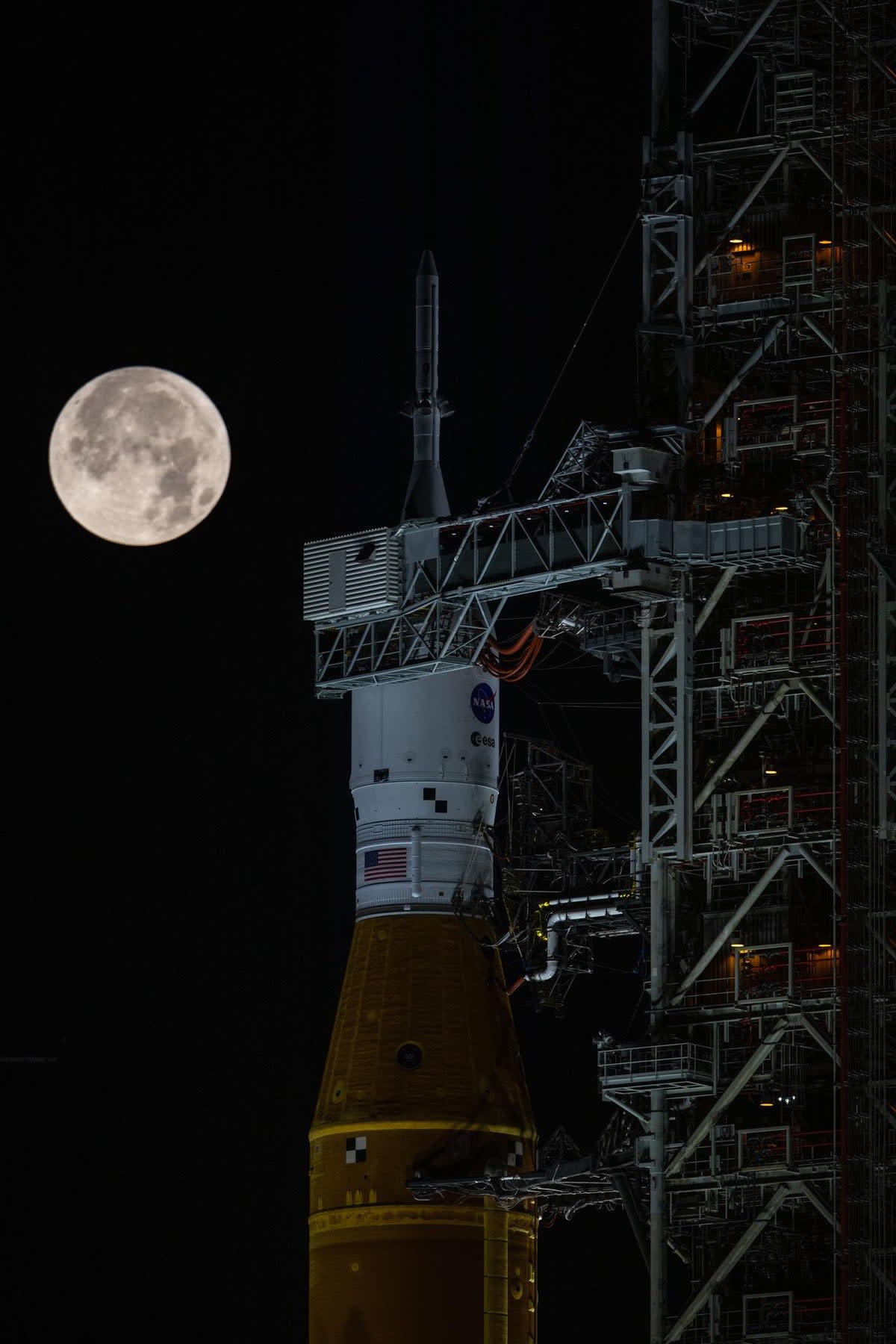Nasa’s Moon rocket could explode if agency does not cancel dangerous launches, expert says

On Monday 29 August, Nasa fueled up its big new Moon rocket on the launch pad at Kennedy Space Center intending to launch it on its first ever test flight, only to scrub the launch after running into a series of problems conditioning one of the engines for launch.
So instead of a rocket launch, spectators who had traveled to Florida to try and catch the launch had to scramble to see if they could keep their hotel reservations through Saturday, when Nasa hopes to try to launch again. That’s inconvenient for some, but it’s not a bad thing, according to MIT professor of aeronautics and astronautics Paulo Lozano, who also directs MIT’s space propulsion lab.
“I’ve been in Florida watching rocket launches and they scrub and you everybody’s like, ‘oh, that’s so sad,’” he told The Independent in an interview. “But you don’t want to risk it because it’s a one shot; they don’t have another Artemis on a pad next door.”
And that’s ultimately the stakes Nasa is playing with when launching a big rocket. It’s not that the problems encountered on Monday were likely to lead to the rocket exploding, although at the extremes they could, Dr Lozano said, but “some degradation of the engine may actually happen, and you don’t want to risk that.”
Not when you can wait and try again another day — an intact rocket left on the pad can still fulfill its mission.
“Honestly, I wouldn’t be surprised if they scrub again for whatever reason,” he said. “It’s a very complex rocket and I’m sure they want to get it right.”
The trouble Nasa encountered Monday had to do with thermally conditioning one of the four RS-25 engines of the Space Launch System (SLS) rocket’s core stage, a process called an “engine bleed” designed to chill the engines down ahead of accepting a full flow of liquid hydrogen propellant.
“It’s actually kind of intuitive,” Dr Lozano said. “What happens if you have something that is very cold and you put it in heat, or it’s very hot, and you put it in cold, like a glass of water? It can break, right? Because of the very strong changes in temperature.”
Operating a finely engineered rocket engine at the wrong temperature could lead to the expansion or contraction of some components, he noted, some of which could then rub against others, a situation Nasa engineers definitely want to avoid. “That can lead to trouble.”
Rather than using some sort of refrigeration machine to chill the engines, Nasa just trickles some of the already very cold liquid hydrogen into the engine. But on Monday, a faulty valve in the SLS rocket’s liquid hydrogen tank appeared to compound the difficulties in getting the number three engine cool enough, and with foul weather predicted toward the beginning and ending of the two-hour launch window that morning, Nasa called the launch.
“There are so many different things that can go wrong in a complex system like this,” Dr Lozano said. “If this was the only thing that was kind of out of the envelope, then actually, I think that that’s actually very good news. Of all the things that can go wrong, this one is easy to fix.”
For one thing, the RS-25 engine is a well tested, reliable, human rated rocket engine. It was the main engine for the Space Shuttle, Dr Lozano points out, but Nasa didn’t select it for the SLS program simply because it had a bunch sitting in a closet.
“It’s one of the highest performing engines ever,” he said. “If you look at the performance, which is characterized by the specific impulse — which is the fuel efficiency, let’s say — this engine is very close to what is theoretically possible.”
Also notable is that neither of the Space Shuttle disasters, the explosion of Challenger shortly after lift off in 1986, or the breakup of Columbia during re-entry in 2003, were caused by problems with the RS-25 engine. While those disasters do highlight the importance of making sure every little detail is good to go before launching a rocket, Dr Lozano noted, they were caused by failing O-rings in the Challenger’s solid rocket boosters and damage to Columbia’s heat shield during lift off, respectively.
“They had nothing to do with these engines,” he said. “These engines are very, very good.”
In fact, the engines themselves are set up to cut off automatically if anything goes awry during start up, Dr Lozano said, even if the human launch team doesn’t catch the problem beforehand.
“It takes five seconds for these engines to start,” he said. “During those five seconds, the computers are checking every millisecond what’s going on. And if there is something that is funny on any engine, all of them will shut down.”
So even if the countdown proceeds as normal on Saturday, Artemis I isn’t launched until the countdown actually reaches zero.
And it’s not a bad thing if it doesn’t. Dr Lozano said he was puzzled to read a newspaper account of Monday’s scrubbed launch that described the cancellation as a failure.
“I said no, that’s not a failure; a failure is when the rocket blows up! In this case, it’s part of the process, it’s a normal process,” he said. “If you think about it, if the rocket actually launches, it’s a big, big, big success, just because of all the things that have to come together. “

